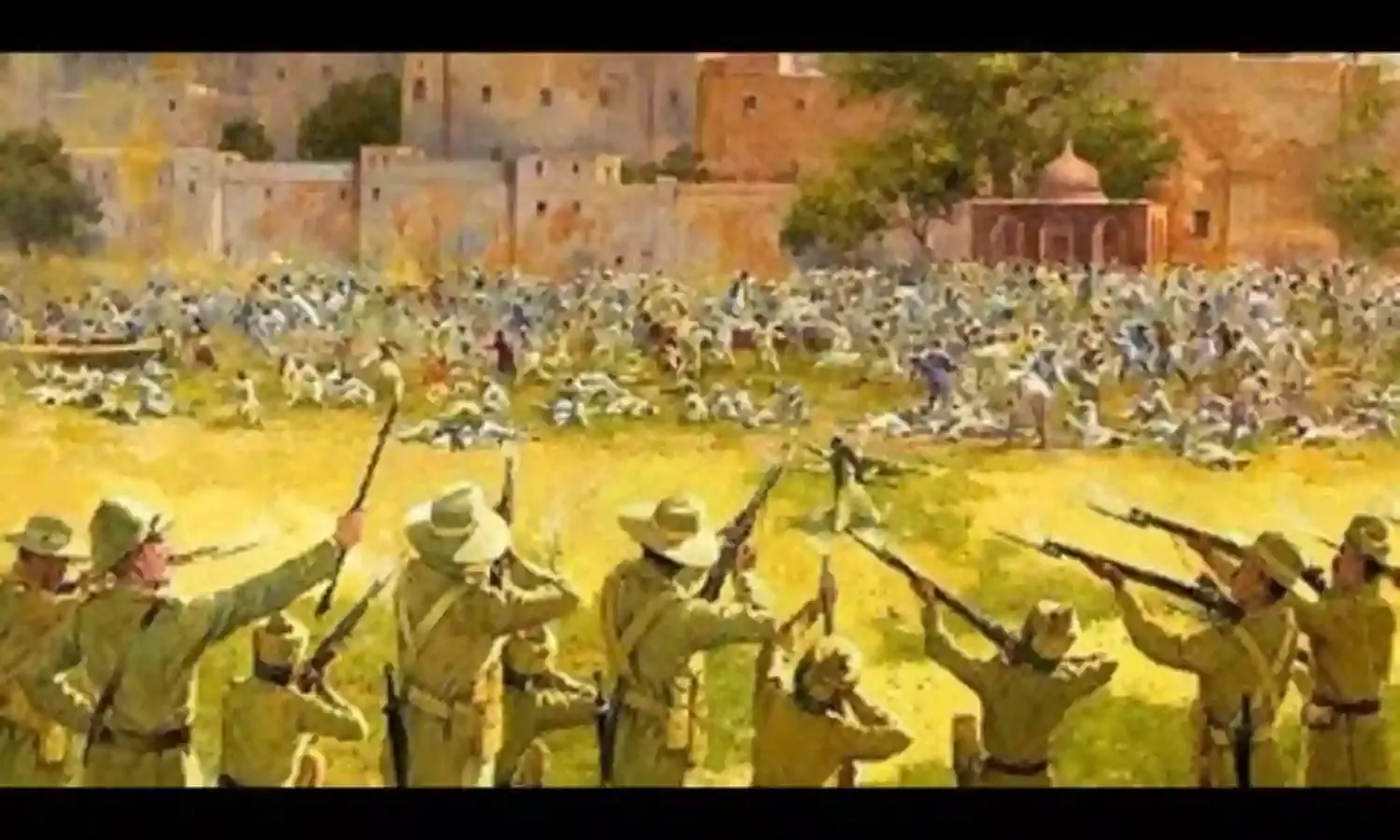Dyer Was Not One of a Kind, He Was the British Mindset
Jallianwalla Bagh was one of several such incidents

Journalist and author interviews Danish academic Dr Kim Wagner on the sidelines of the Jaipur Literary Festival. Author of the latest book about Jallinwalla Bagh, Wagner says that the attitude of other colonial officers towards Indians was the same as Dyer. “They believed that Indians only understood brute force.”
The Jallianwalla Bagh killings of 1919 were not the first or the last of the large-scale British colonial massacres in India, according to a London-based academic who has researched the subject extensively.
Danish academic Dr Kim Wagner, a senior lecturer in British Imperial History at Queen Mary University in London, is a participant in the Jaipur Literary Festival taking place in the British capital this week-end. He is also the author of the latest book about Jallianwalla Bagh, entitled, ‘Amritsar 1919: An Empire of Fear and the Making of a Massacre’.
As the festival gets underway, Dr Wagner told ‘The Citizen’ that the attitudes of other white colonial army officers and civil servants were similar to that of acting Brigadier General Reginal Dyer who authorised the 1919 firings that led to the deaths of hundreds of innocent civilians in Amritsar. They believed that Indians only understood brute force
Two weeks before Jallianwalla Bagh the white commanding officer of Delhi, Brigadier Drake-Buchanan, presided over the killings of 30 Indian civilians. He was quoted at the time as saying, “Composed as the crowd was of the scum of Delhi city, I am of firm opinion that if they had got a bit more firing given them it would have done them a world of good and their attitudes would be more amenable and respectful.”
Dr Kim Wagner
“Others who carried out similar killings had a mind-set that was similar to Dyer’s”, Wagner said. They included District Commissioner Frederick Henry Cooper who wiped out an entire regiment of sepoys in 1857 and dumped their bodies in a well at Ajnala, close to Amritsar city. The well is known locally and nationally as ‘shaheedan wala khu’.
Although he was condemned at the time in London by a single Liberal MP, Charles Gilpin, Cooper was rewarded by being appointed a Companion of the Order of Bath in the Birthday Honours list of 1860.
Another ‘distinguished’ colonial killer in January 1872, was Amritsar Deputy Commissioner J. L. Cowan. He responded to unrest among the Kuka or Namdhari Sikhs in 1872 with the summary execution of 68 prisoners who were blown from the mouth of a cannon in the small principality of Malerkotla in Punjab.
Details of how some Indian executions were published in some British newspapers like the London Times. In December 1857 a Times correspondent reported the effect of being blown from a cannon and how ‘the ground was sown with red grisly fragments, then a blackhaired head and the other arm still held together … close by lay the lower half of the body of the next, torn quite in two, and long coils of entrails twined on the ground. Then a long cloth in which one had been dressed rolled open like a floorcloth and on fire. One man lay in a complete and shattered heap, all but the arms; the legs were straddled wide apart, and the smashed body on the middle of them; the spine exposed; the head lay close by, too … The troops immediately marched off, and I rode home at speed, and when I dismounted the dogs came and licked my feet.’
Wagner says some British colonial officers and civil servants would be liable today to be tried for crimes against humanity. Similar atrocities were carried out by them in Kenya and Malaya. But he argues against comparing British colonial officials with the German Nazis because the Nazis were more racist and committed to killings of genocidal proportions.



